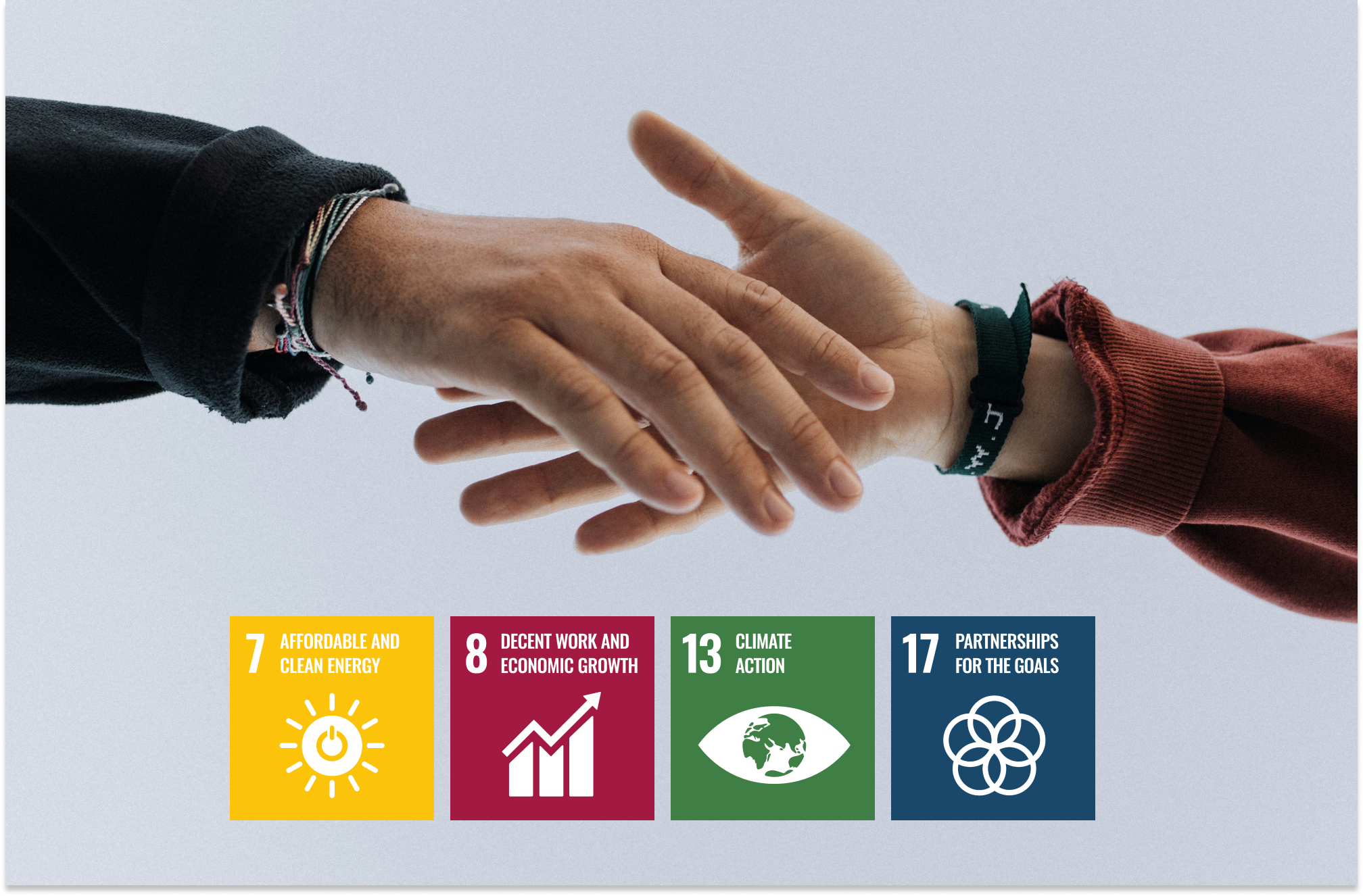We align our sustainability work with the goals of the United Nations (UN SDGs). Priority is given to avoiding and reducing our own emissions. In addition, through ClimatePartner we contribute to certified projects, mainly in the field of renewable energy (focus on hydropower). In this way, we make measurable contributions to SDG 7 (Affordable and Clean Energy), SDG 13 (Climate Action) and – as co-benefits – to SDG 8 (Decent Work and Economic Growth) as well as SDG 17 (Partnerships).
Why the SDGs are our reference point
The Sustainable Development Goals connect climate, resources, economy, and social aspects in a global framework. For a B2B supplier like Ofrex, they create a common language with customers and suppliers. We translate the SDGs into clear priorities: first avoid, then reduce, and only for today’s still unavoidable emissions do we make additional climate protection contributions in verified projects.
Methodology & Governance: solid basis, clear roles
We calculate our CO₂ balance (Corporate Carbon Footprint) annually with ClimatePartner according to the GHG Protocol (Scope 1–3, as far as data is available). The result serves as the starting point for reduction pathways with interim targets. For project-based climate protection contributions, we use certified standards (e.g. Gold Standard, Verified Carbon Standard). Important: climate protection projects do not replace our own measures – they complement them. Priority remains the absolute reduction.
Our focus with ClimatePartner: renewable energy
The focus is on renewable power generation projects, particularly hydropower. These projects:
- feed clean energy into the grid (SDG 7),
- avoid greenhouse gas emissions in the power mix (SDG 13),
- create local value and jobs in operation and maintenance (SDG 8),
- are developed in partnerships between operators, auditors, and communities (SDG 17).
Depending on the annual portfolio, we also consider project types that address additional SDGs (e.g. biogas/waste-to-energy for SDG 11/12, efficient cookstoves for SDG 3/5/7, or renaturation for SDG 15). However, the priority remains on renewable energy.
SDG impact – concretely classified
SDG 7 – Affordable and Clean Energy
- Project impact: Renewable electricity replaces fossil generation and stabilizes local grids.
- Our contribution: Financing certified renewable energy projects (focus on hydropower) as a complement to our own reduction.
SDG 13 – Climate Action
- Project impact: Demonstrable emission avoidance (tCO₂e) through clean generation.
- Our contribution: Annual CO₂ balance as a management basis; project-specific climate contributions according to transparent criteria.
SDG 8 – Decent Work and Economic Growth (co-benefit)
- Project impact: Local jobs in construction, operation, and maintenance; qualification and safety standards.
- Our contribution: Preference for projects with documented social standards and occupational safety.
SDG 17 – Partnerships for the Goals
- Project impact: Collaboration between companies, project developers, auditors, and communities.
- Our contribution: Cooperation with ClimatePartner and verified project developers; transparent reports and documentation.
How we proceed
Quality criteria for projects: what we insist on
- Certification & additionality – only projects with recognized standards and proven additional climate impact.
- Monitoring & verification – regular, independent audits; traceable project IDs and retirement evidence.
- Transparency – disclosure of methodology, system boundaries, risks (e.g. water flow, dry periods), and co-benefits.
- Social & ecological due diligence – protection of biodiversity, water quality, labor and human rights.
- No greenwashing – projects complement internal reduction; communication without exaggerated or blanket neutrality claims.
How we measure and report
- tCO₂e financed: annually reported climate contribution per project/standard.
- SDG mapping: documented allocation of project impacts to SDG targets/indicators.
- Share of renewable energy in the project portfolio: focus ratio per year.
- Review cycles: annual portfolio review; update of documentation and links to project records.
- Integration: project data flows into our CSR update; it is provided in addition to operational reductions.
Example of a project year
- Clarify needs: finalize CO₂ balance, identify residual emissions.
- Define portfolio: prioritize renewable energy projects; add co-benefit projects if appropriate.
- Due diligence: certificates, monitoring reports, risk check.
- Contribute & document: booking, project ID, retirement/accounting.
- Reporting: SDG mapping, KPI update, links to project information.



